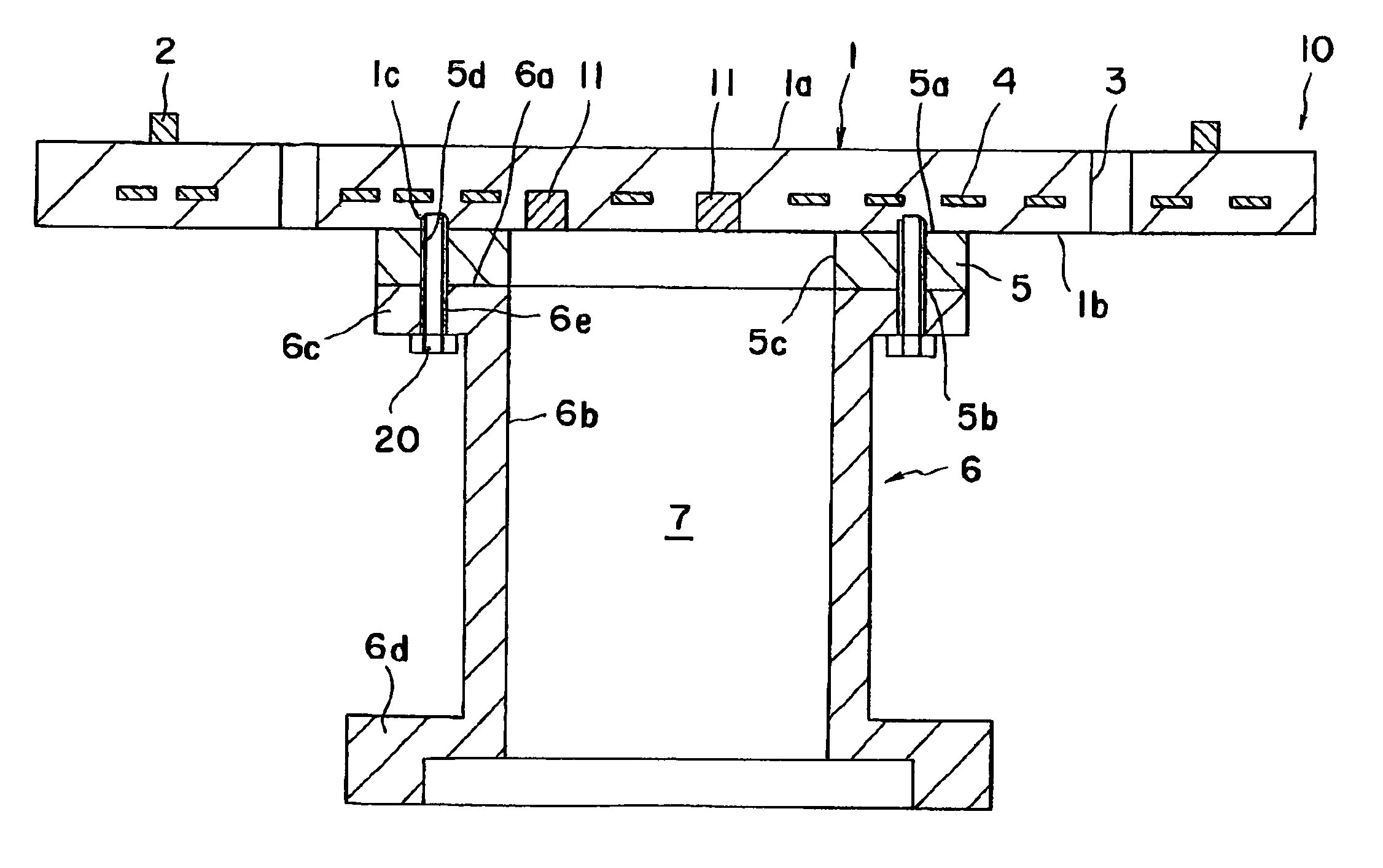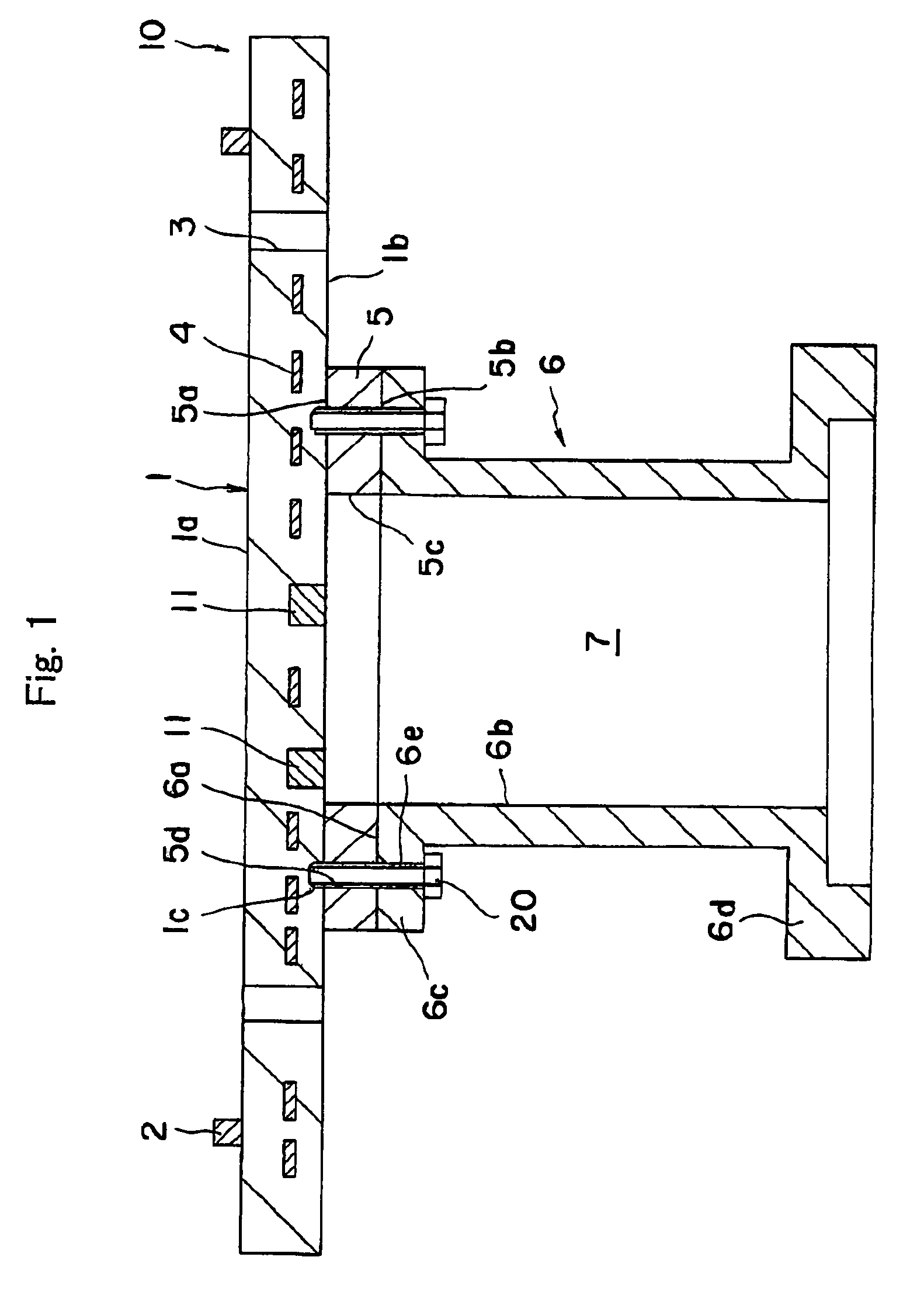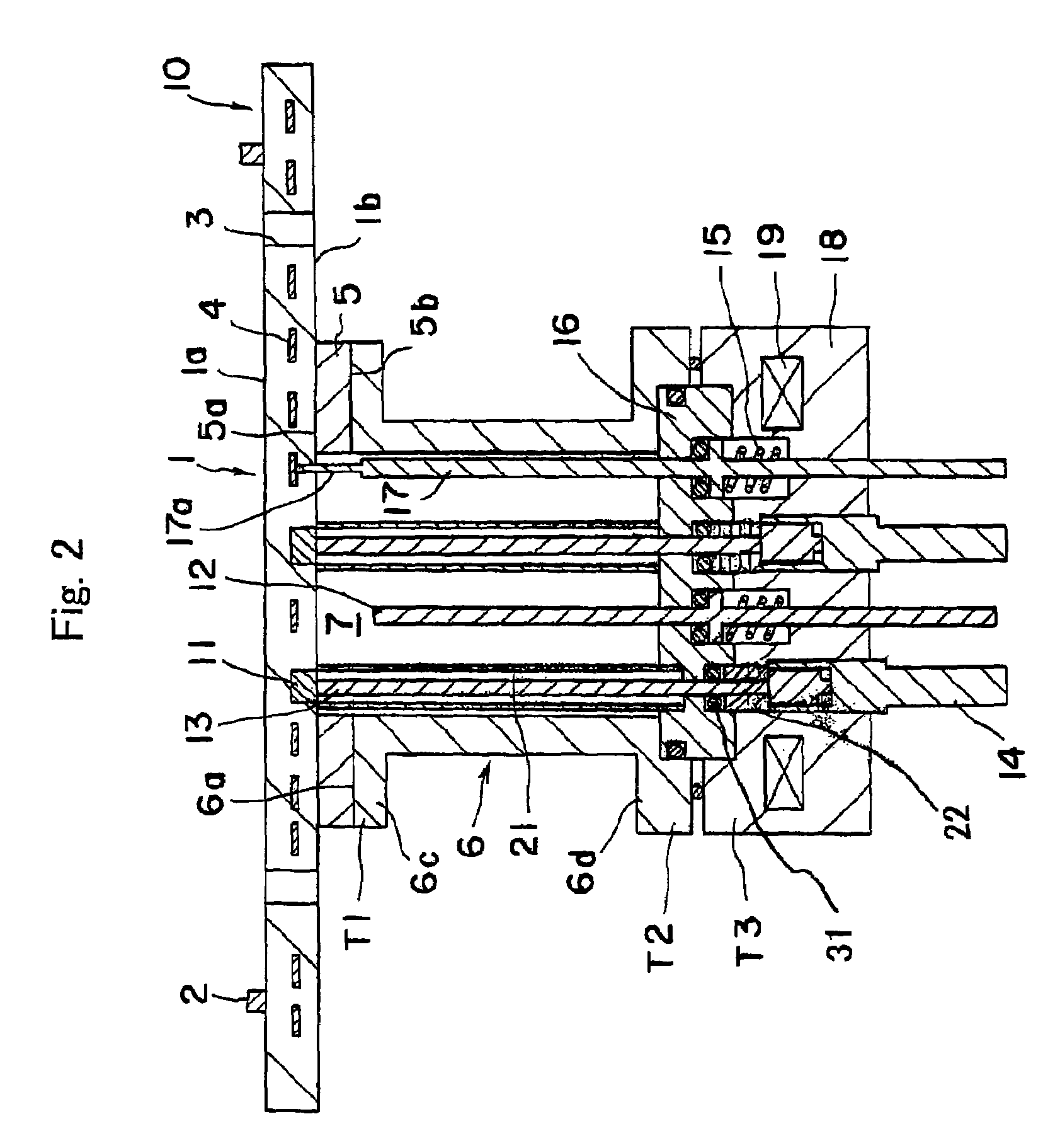Heating systems
a heating system and support member technology, applied in the field of heating systems, can solve the problems of high manufacturing cost of supporting members made of heat resistant and dense ceramics, difficult joining and fixing of supporting members to ceramic heaters, and high cost of joining parts, so as to prevent the deformation of the heating face, prevent the deformation, and prevent the effect of deterioration
- Summary
- Abstract
- Description
- Claims
- Application Information
AI Technical Summary
Benefits of technology
Problems solved by technology
Method used
Image
Examples
example 1
[0055]A heating system having a construction shown in FIGS. 1 and 2 was produced. The ceramic substrate 1 was made of an aluminum nitride sintered body, in which a molybdenum coil was embedded as the heat generator. Pins 2 for mounting wafer were formed of alumina. The thickness of the substrate 1 was 10 mm and the diameter φ was 320 mm. The heat insulating plate 5 was made of alumina, the thickness of the heat insulating plate 5 was 8 mm and the diameter φ was 80 mm. The tubular supporting member 6 was formed of aluminum alloy, the insulating tube 21 was formed of alumina, and the rod 13 for power supply was formed of nickel. The cooling shaft 18 was formed of aluminum alloy. Nitrogen gas was flown from the tip end of the purging tube 12, while the cooling flange 19 was cooled with flowing water. The heat insulating plate 5, flange portion 6c, and substrate 1 were fastened with a screw 20 made of Inconel.
[0056]Using the thus produced heating system, the pressure in the chamber was ...
example 2
[0059]A heating system having a construction shown in FIGS. 3 to 5 was produced. The ceramic substrate 1 was made of an aluminum nitride sintered body, in which a molybdenum coil was embedded as the heat generator. Pins 2 for mounting wafer were formed of alumina. The thickness of the substrate 1 was 10 mm and the diameter φ was 320 mm. The heat insulating plate 5 was made of alumina, the thickness of the heat insulating plate 5 was 8 mm and the diameter φ was 80 mm. The tubular supporting member 6 was formed of aluminum alloy, the insulating tube 21 was formed of alumina, and the rod 13 for power supply was formed of nickel. The cooling shaft 18 was formed of aluminum alloy. Nitrogen gas was flown from the tip end of the purging tube 12, while the cooling flange 19 was cooled with flowing water. The heat insulating plate 5, flange portion 6c, and substrate 1 were fastened with a bolt 20 made of Inconel. The elastic body 21 was composed of a coil spring made of SUS and a washer made...
PUM
| Property | Measurement | Unit |
|---|---|---|
| temperature | aaaaa | aaaaa |
| temperature | aaaaa | aaaaa |
| temperature | aaaaa | aaaaa |
Abstract
Description
Claims
Application Information
 Login to View More
Login to View More - R&D
- Intellectual Property
- Life Sciences
- Materials
- Tech Scout
- Unparalleled Data Quality
- Higher Quality Content
- 60% Fewer Hallucinations
Browse by: Latest US Patents, China's latest patents, Technical Efficacy Thesaurus, Application Domain, Technology Topic, Popular Technical Reports.
© 2025 PatSnap. All rights reserved.Legal|Privacy policy|Modern Slavery Act Transparency Statement|Sitemap|About US| Contact US: help@patsnap.com



